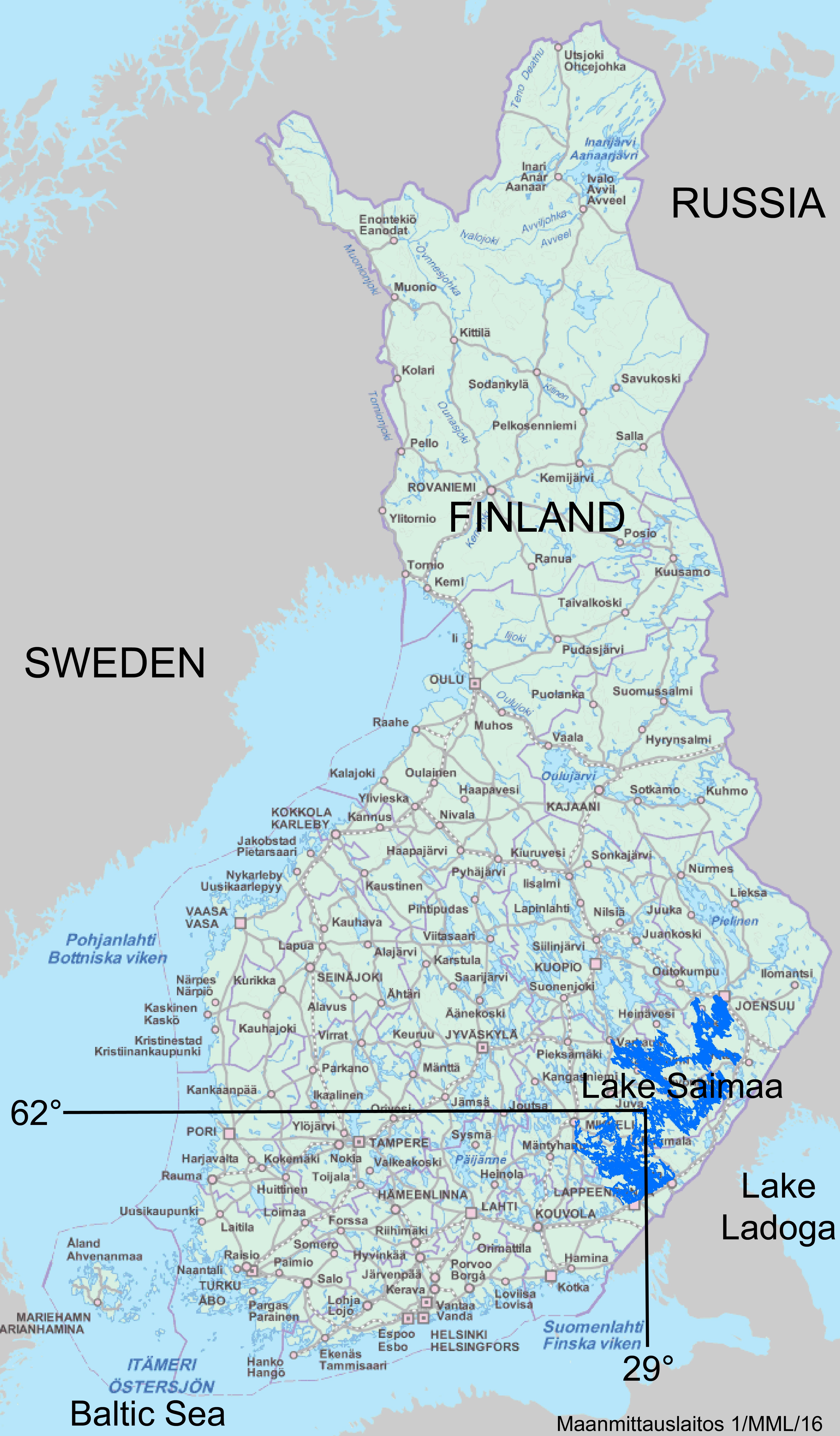The Saimaa ringed seal has an IUCN status of endangered (EN) sub-species and in the Habitat Directive the status is a species needing strict protection (Council Directive 92/43/EEC, Annex IV). According to this latter, the deterioration and destruction of a habitat, breeding site, and resting place important for the survival of a species (or sub-species) under strict protection is prohibited. Therefore, the LIFE project has obtained the permits from for the local Centre for Economic Development, Transport and the Environment for piling up the man-made snowdrifts at the seal’s lair sites. In addition, the following legal elements are relevant for the Saimaa seal conservation project.
Conservation policy
The Saimaa ringed seal was protected in 1955 by a statutory decree based on the Hunting Act. In 1993 legal protection was transferred to the Nature Conservation Act, and the responsibility for management was given to the Ministry of Environment and in practice to the Parks & Wildlife Finland that is a public agency that forms part of the state-run enterprise Metsähallitus. A conservation strategy and action plan for the Saimaa ringed seal was adopted in 2011 and is currently being updated.
Conservation areas and programmes
In Saimaa lake district the establishment of the Linnansaari National Park in 1956 was a significant factor for protection of Saimaa seal (9,600 hectares, winter stock of 65-86 seals). Kolovesi National Park was established in 1990 and the protection of the Saimaa ringed seal was the main contributing factor for conservation of the area (2,300 ha, winter stock app. 9-12 seals). There are also some privately owned conservation areas established for the protection of Saimaa seal.
The Finnish National Shoreline Conservation Programme was adopted in 1990. It also gives the means to protect the breeding habitats of the Saimaa ringed seal. In the lake Saimaa the programme covers 92,000 ha (mostly water areas). Most of the distribution area of the seal is included in the Natura 2000 Network; Natura 2000 areas cover a total of 157,426 ha (33,022 ha land, 124,404 ha water). Respectively, the Shoreline Conservation Programme and the Natura 2000 network cover approximately 70% and 95% of the shorelines where the seals’ lair sites are located. To implement the conservation programme and conservation goals of Natura 2000 network, nature conservation areas have been established and areas acquired for the state for conservational purposes. Implementation of the Natura 2000 network is carried out also by means of land use plans in line with the Land Use and Building Act, fishing restrictions according the Fishing Act and establishment of restriction areas under the legislation regulating motor vehicle use in terrain.
Fishing restrictions
At Lake Saimaa, fishing has been restricted since the 1980s to protect the Saimaa ringed seal. Fishing closures and restrictions are main conservation measures for the ringed seal population and the restriction areas have increased from 1.5% to ca. 60% of the lake’s surface area. At present, the fishing restriction decree (259/2016) has one spatial (covering ca. 60% of the lake), and two temporal (spring-time and year round) fishing restrictions. During spring (from 15 April to 30 June) which is the most critical period for pup survival, the use of gill nets is banned. Whereas, the use of most lethal fishing gear types for seals (e.g. fish traps with an opening wider than 15 cm, strong-mesh gill nets, hooks baited with fish and multifilament nets) are banned year-round. Despite of the spatial enlargement in 2016, the areal coverage of the decree is still smaller than the breeding or distribution area of the Saimaa ringed seal especially in the northern and southern parts of the lake. In addition to the decree, also voluntary based fishing restriction contracts are implemented in water areas near the decree area (covering 81 km2 at September in 2016). Financial compensation is paid to water owners (the owners of the fishing right) for signing the voluntary fishing restriction contract in the or nearby decree area.



